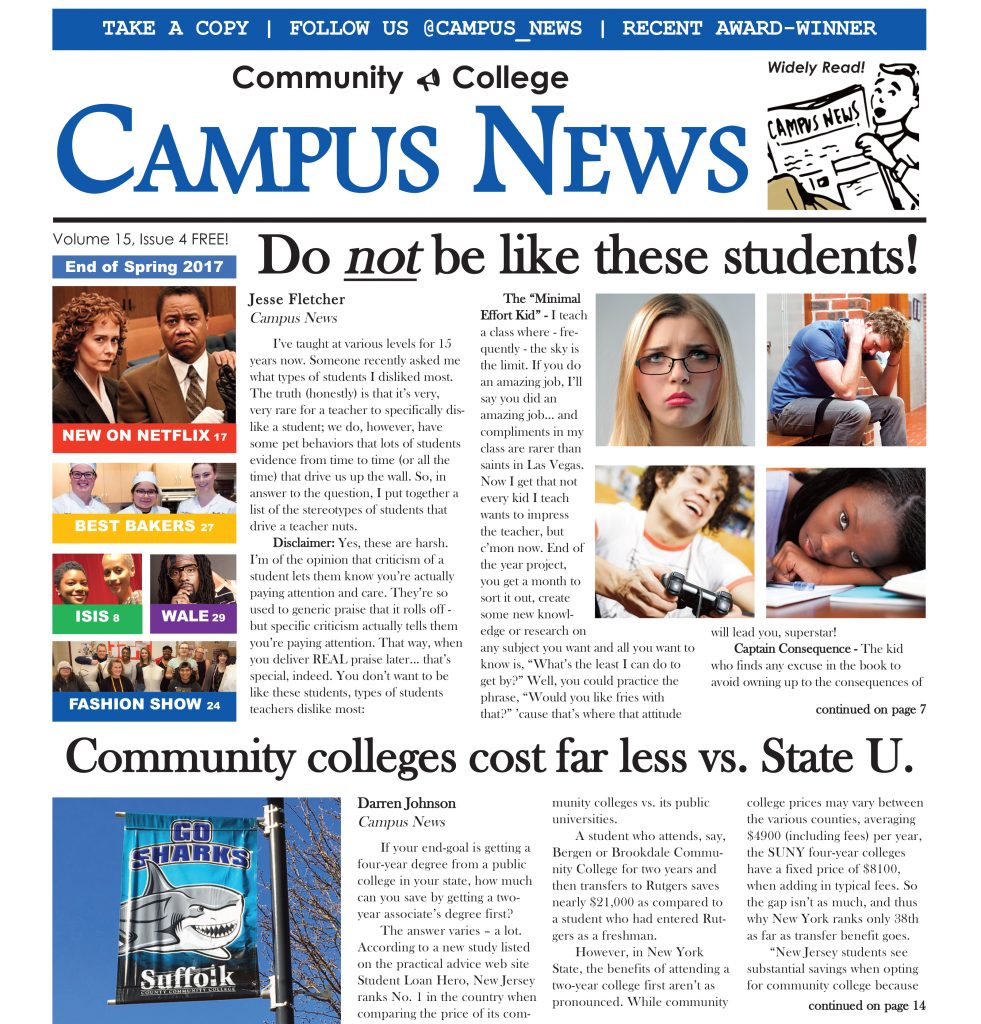By Darren Johnson
Publisher, Campus News
I’m about to head off to the national conference for the big college newspaper groups – Associated College Press and College Media Association – to talk about what you’re looking at right now; a print college newspaper (unless you are reading this on the web — here it is). I have some ideas how they can stay in print, like Campus News has. It’s called Media Fest ’22 and is in Washington, DC, this year.
I haven’t made my PowerPoint yet, but did a little pre-poll via the conference app. The results, so far, are above. College newspaper advisers and student journalists attend the conference.
It seems that a majority of newspapers have either quit publishing a print edition, or at least have cut back on pages, frequency and/or circulation. Usually that means a death spiral – my belief is a paper shouldn’t make cuts and instead tough through hard times. As newspapers cut, they become less relevant. Eventually, the people who pony up the money to fund the paper won’t see the value anymore, as pages shrink and sincere bylined articles turn into hollow press releases. It’s better to put on a brave face, keep publishing at full strength, and maneuvering for new revenue streams meanwhile. Giving in is giving up.
Surprisingly, 30% of college newspaper personnel say they are still publishing regularly, with full editions. However, I’m sure it will turn out these papers are in states that didn’t have strict Covid restrictions the past few years.
In the Northeast, where most public colleges were shuttered and private colleges were eerily empty, I saw no student newspapers in print. With Campus News, which is independently published and dropped at dozens of colleges, just before the pandemic we had developed a street program with kiosks on corners outside colleges where papers could be gathered. This actually saved us, so we stayed with the same frequency and number of pages, and were still able to gather enough advertising dollars to survive.
I plan to share Campus News’ survival techniques with other college paper publishers so that they, too, could stave off defeat.
One idea I’m considering is demonstrating how the students of yesteryear were different than today, so, considering a newspaper is a business, publishers need to adapt.
For example, a student journalism student in, say, the year 1990, may have come into college with significant skills to advance a print paper. Many of those students had paper routes as kids, so they understood distribution. Student distribution today is much less energetic and thus less effective. Students from 1990 probably did some door-to-door selling. They also knew how to use the voice aspect of a phone. So they were much more assertive and could better sell ads for the student newspaper compared to students of today, whose parents largely sell those Girl Scout cookies and World’s Finest Chocolate bars. Ads=income.
I think that’s the tact I will take with my presentation. The practices of yesteryear no longer work, because we no longer have the same personnel. But students (writers and readers) still want a newspaper, and producing one is a great way to teach them about journalism.
And, let’s face it, the print paper can be a moneymaker for a student group – and money means independence. A well-funded paper can more handily take on that mean dean because the dean won’t have the power to defund them (for example, taking away the money they get from student fees), thus censoring them. A good newspaper business model is good for democracy.
I’m sure my PowerPoint will be more thorough than the above. I do have well over an hour for this, so will need to dig in. I’ll post a PDF of my presentation on cccnews.info; or if they record a video, I’ll post a link to that. Check after Nov. 1. (Add — here is that PowerPoint as a PDF.)
 I have approximately 75 tricks up my sleeve to save printed student newspapers. Just ask me a question and I’ll give you advice. My email is editor@cccn.us.
I have approximately 75 tricks up my sleeve to save printed student newspapers. Just ask me a question and I’ll give you advice. My email is editor@cccn.us.






If I could say thank you in 72 pt type, it wouldn’t be tall enough. Where there’s life, there’s hope.
People who did not grow up with print don’t know what they’re missing. I’m an avid listener to public radio and some commercial stations. I watch my share of television. BUT PRINT is easy to go back to. It can be savored. Reading can S L O W D O W N thinking, resulting in pondering, reflecting, changing one’s immediate impression, and treasuring/savoring the preciseness of good writing.
My life path has wandered away from my J-major days, times of learning about and doing everything involved with a college newspaper, but I teach American English and American cultures and use everything I learned through experience based in my college education .
Talk about critical thinking, objectivity, clarity of expression, beauty of words and images, true patriotism, public service, and ethical beliefs – that’s where journalism, print, and democracy co-exist in glory.
Thank you, Darren Johnson – Live Long and Prosper!